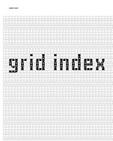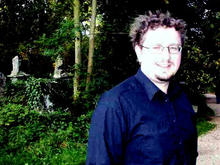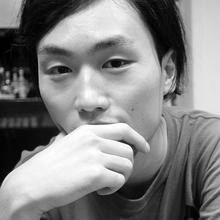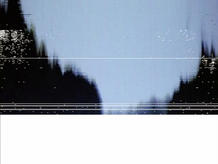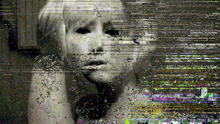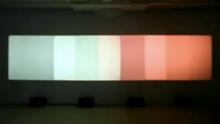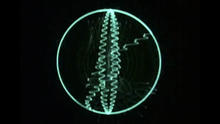8 Switches
(2011)by Tim Wright presents six black-and-white microcinematic vignettes of retina-searing, hard-edged, epilepsy-inducing sound and vision; synchronized to a soundtrack that is relentless and unsentimental.
Each new section presents a variation on the same sleek, kinetic minimalism. As each section progresses, the razor-sharp line between a host of binary oppositions—black/white, figure/ground, silence/sound, here/there, on/off — dissolves through sheer velocity. The rapid-fire alternation between these binary oppositions acts like the flicker of film frames, accelerating until sound and sight are wed into a synchronous whole in which neither the visual nor the sonic takes primacy. Instead, each acts as mutually constitutive literalisation of the other. As the distance from eye to ear collapses, the distinction between the immediacy of one’s physical sensation and its ghostly afterimage — those traces left on blistered corneas and eardrums and optic nerves and neurons — can no longer be maintained. Staccato pin-pricks of light and frequency fuse into a single synesthetic object and single overwhelming experience. (Joseph Clayton Mills)
Source: Entr’acte
I’d not like to suggest that there was a correlation between exploring Tim Wright’s latest exercise in audiovisual torture and the migraine I suffered a few hours later, but make no mistake, this innocuous-looking memory-stick release contains strong stuff.
Tim Wright – aka Germ, Tube Jerk, etc., and currently one half of dark electro anti-pop duo Viewer – has a substantial track record for music that’s innovative, challenging and influential, and with 8 Switches he again proves that he’s at his best when out on a limb.
Sonically, 8 Switches is an uneasy electro flicker, microbeats paired with the most distant ambience like a solar wind. Each sound is richly textured, Wright playing with sound and rendering it malleable, physical. At times squelchy, at others scratchy, there’s an abrasive quality to this instrumental work. Yes, it’s electronic music, but bears no relation to commonplace electropop, dance or ambient: this is electronica that uses tone and frequency as a weapon.
Visually, it’s a sequence of black and white shapes shifting at an almost subliminal speed to create a relentless stroboscopic effect that scorches the retinas and seers the images onto the brain. Close your eyes and they’ll be flashing behind your eyelids long after the explosive flickering barrage of fit-inducing forms has stopped. I’m reminded of a passage from the brain-bending 1970 novel The Braille Film by the late and criminally underrated Carl Weissner, which includes the following passage that refers to The Flicker, a film by Tony Conrad as follows:
"The Flicker begins at four light flashes a second and anything above 40 flashes a second is indiscernible to the eyes except continuous light. The Flicker is actually 47 different patterns of black&white frame combinations. The film starts with a high flicker rate of 24 flashes per second, causing little effect, and gradually lowers to a stroboscopic eye massage of 18 to 4 flashes per second. It is known to cause fits of photogenic epilepsy in some subjects; others simply disintegrate."
In combination, the effect is even greater than the sum of the parts, a truly synapse-melting explosion, a sustained assault on the senses that’s stark, startling and guaranteed to disrupt the biorhythms, and even as I type I feel as though I’m slowly crumbling from the inside, my brain and internal organs liquefying cell by cell.
Tim Wright may be a quiet man, but don’t be fooled: he’s one twisted fucker, and the world is a better place for his dastardly art. (Christopher Nosnibor)
Source: Whisperin and Hollerin
